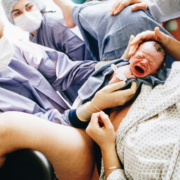Understanding the Most Critical Birth Complications
Childbirth is a profound moment that marks the arrival of a new life. While it is a time of joy and celebration for many, it can also present serious challenges and complications that require immediate and effective medical intervention. Knowing about the most critical birth complications can help expectant parents prepare for the unexpected and ensure the best possible care for both mother and child. This article delves into the “Most Critical Birth Complications” to provide you with essential knowledge and preparedness strategies.
1. Preeclampsia and Eclampsia
Preeclampsia is a condition characterized by high blood pressure and signs of damage to another organ system, most often the liver and kidneys, during pregnancy. If not properly managed, preeclampsia can lead to eclampsia, a severe complication that causes convulsions and, potentially, both maternal and infant mortality. Immediate medical intervention to manage blood pressure and prevent seizures is critical.
2. Obstetric Hemorrhage
One of the leading causes of maternal mortality worldwide is obstetric hemorrhage, which is severe bleeding during or after labor and delivery. The most common reasons include placental abruption, placenta previa, and postpartum hemorrhage (excessive bleeding after the birth). Treatment often involves rapid blood transfusion and medications to promote clotting.
3. Uterine Rupture
Though rare, uterine rupture poses a severe risk during vaginal birth, especially in women with a history of cesarean delivery or uterine surgery. This complication occurs when the muscular wall of the uterus tears during childbirth, which can lead to massive internal bleeding and distress for the baby. Emergency surgical delivery is typically required.
4. Preterm Labor and Birth
Preterm labor is labor that begins before 37 weeks of pregnancy. Babies born prematurely may have significant health issues, including respiratory distress syndrome, cardiovascular complications, and long-term developmental delays. Management might include medications to delay birth, enhance fetal lung maturity, or both.
5. Infection
Infections can be a serious complication both during and after birth. These might include chorioamnionitis (infection of the placental tissues and amniotic fluid) and endometritis (infection of the uterine lining). Antibiotics are the mainstay of treatment, alongside supportive care as needed.
6. Perinatal Asphyxia
Perinatal asphyxia occurs when the baby does not receive enough oxygen before, during, or immediately after birth. This can lead to hypoxic-ischemic encephalopathy (HIE), which can cause neurological damage and other severe complications. Immediate resuscitation and supportive therapies in neonatal intensive care units are crucial.
Conclusion: Preparation and Immediate Response are Key
Understanding and preparing for these critical birth complications can significantly impact the outcomes for both mother and baby. Expectant parents should discuss potential risks with their healthcare providers and have a birth plan that includes protocols for handling emergencies.
Proper prenatal care, awareness of the signs and symptoms of complications, and having a skilled medical team can help manage these risks effectively. Remember, while some complications are unpredictable, early detection and intervention can often save lives and improve health outcomes for both mother and infant.
Reference:
- World Health Organization (WHO) – Maternal and Perinatal Health
- Centers for Disease Control and Prevention (CDC) – Pregnancy Complications
- March of Dimes – Complications and Loss
- American College of Obstetricians and Gynecologists (ACOG) – Pregnancy and Birth
Disclaimer
The information, including but not limited to, text, graphics, images and other material contained on this website are for informational purposes only. The purpose of this website is to promote broad consumer understanding and knowledge of various health topics. It is not intended to be a substitute for professional medical advice, diagnosis or treatment. Always seek the advice of your physician or another qualified healthcare provider with any questions you may have regarding a medical condition or treatment and before undertaking a new health care regimen, and never disregard professional medical advice or delay in seeking it because of something you have read on this website.

